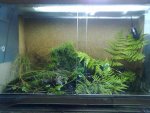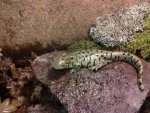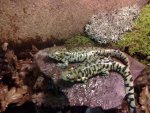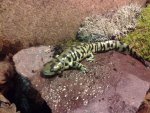Yahilles
New member
- Joined
- May 24, 2007
- Messages
- 529
- Reaction score
- 22
- Points
- 0
- Age
- 30
- Location
- Poznań, Poland
- Country
- Poland
- Display Name
- Janusz Wierzbicki
My buddy, who doesn't know English asked me to post pictures of his tank and tigers on this forum, so here are the photos:

And "winter" version:

And inhabitants (sadly, no certain info about what species or subspecies they might be - every tiger here in Poland is sold under the name of Ambystoma tigrinum)




And "winter" version:

And inhabitants (sadly, no certain info about what species or subspecies they might be - every tiger here in Poland is sold under the name of Ambystoma tigrinum)








